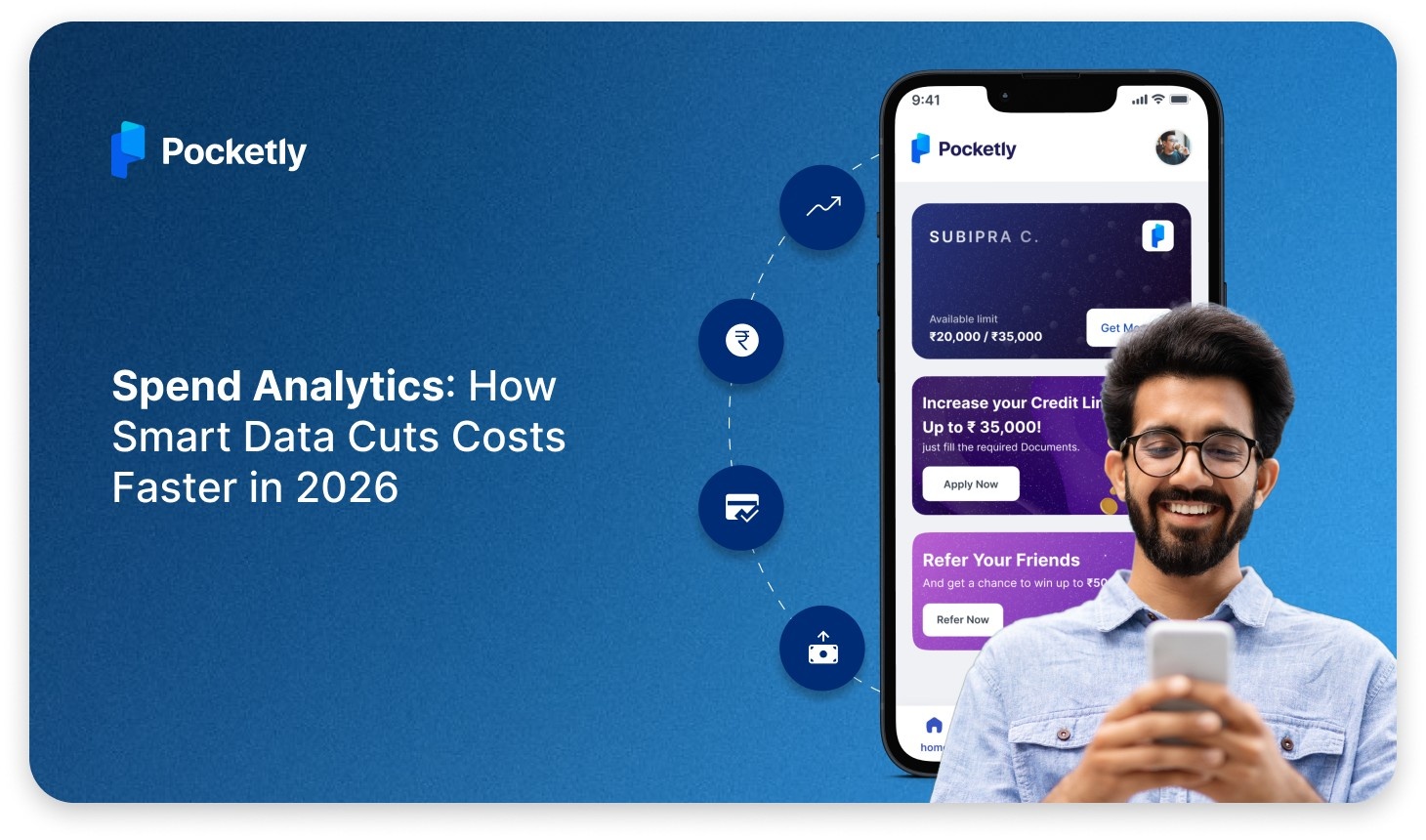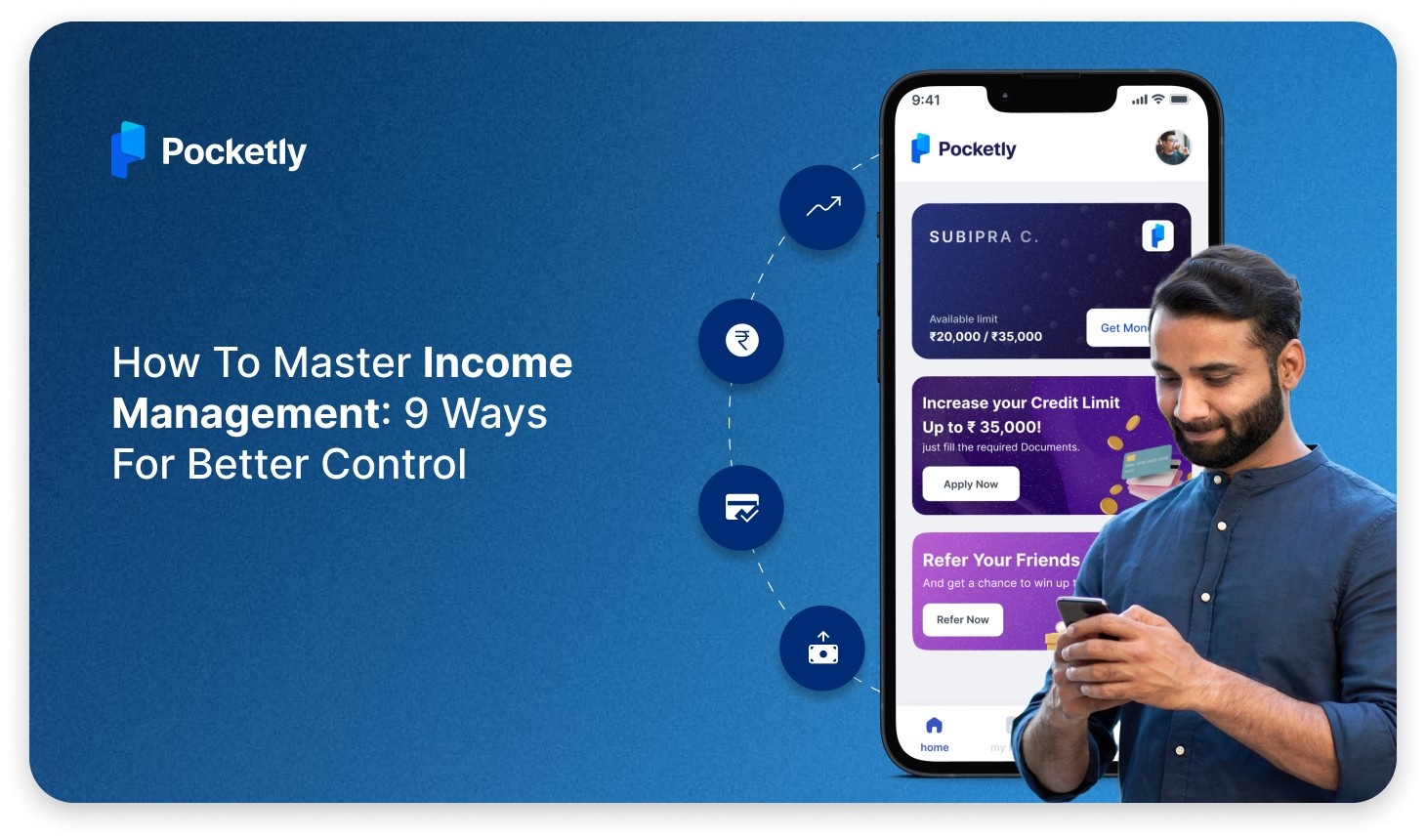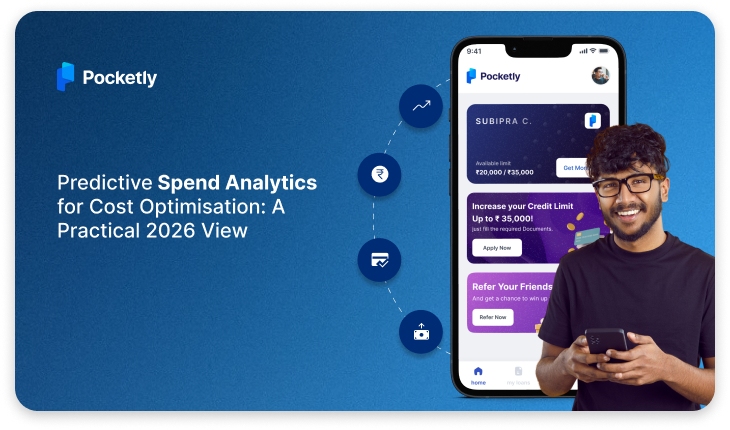
When faced with a financial crunch, using your Fixed Deposit (FD) as collateral for a loan may appear to be a simple solution. But before you proceed, it's essential to understand the implications of the interest rates and how they can affect your loan.
Did you know that 77% of loans require collateral, and the median loan-to-collateral value is around 60%? Recent developments, like ICICI Bank's FD interest rate cut after the RBI's repo rate reduction, make it even more critical to be mindful of the interest rates tied to your FD when considering a loan against it.
This blog will explore the disadvantages of a loan against a fixed deposit, especially considering how recent interest rate changes can impact your financial decisions. If you've been considering such an option, understanding these factors will help you make informed, effective choices for your financial future.
What is a Loan Against Fixed Deposit?
A loan against a fixed deposit (FD) is a financial product where you pledge your FD as collateral to secure a loan. Unlike unsecured loans, which rely on your creditworthiness, a loan against an FD is secured by the amount you have already invested in the fixed deposit. This assures the lender that they have collateral to fall back on, which is why these loans often come with lower interest rates than unsecured loans.
How It Works:
- Loan-to-Value Ratio:
- When you take a loan against your FD, the lender typically allows you to borrow up to 75%-90% of the FD value. This means that if you have an FD of ₹1,00,000, you may be able to borrow between ₹75,000 and ₹90,000, depending on the terms of the lender.
- Interest Rates:
- The interest rate on a loan against FD is generally lower than personal loans or credit card loans, because the FD serves as collateral. Rates typically range between 2%-3% higher than the FD's interest rate, making it an affordable option. However, it’s important to note that the loan's interest rate will be slightly higher than the rate you earn on the FD.
- Repayment Structure:
- The repayment structure for an FD loan is usually flexible. You can either pay in EMIs (Equated Monthly Installments) or opt for a lump sum repayment. The loan term typically ranges from 6 months to 5 years. Although some lenders may impose prepayment penalties, you may also opt to repay the loan sooner.
Why People Opt for It:
- Lower Interest Rates:
- A major attraction of taking a loan against FD is the relatively low-interest rates compared to unsecured loans. Since your FD secures the loan, it carries less risk for the lender, which translates to lower borrowing costs for you.
- Quick Disbursal:
- These loans are often approved and disbursed quickly. Since the loan is secured, the process is faster than unsecured loans which require extensive credit checks and documentation.
- No Need for Credit Check:
- With a loan against FD, lenders typically don’t check your credit score as closely as they would for an unsecured loan. This makes it a viable option for individuals with a poor credit history but savings tied up in fixed deposits.
While a loan against fixed deposit can offer quick access to funds, it’s crucial to understand the potential drawbacks that come with it. In the following section, we’ll explore the key disadvantages of opting for a loan against your FD, so you can make an informed decision.
Also Read: What is EMI: Definition, Types, Advantages, and How it Works
Key Disadvantages of a Loan Against Fixed Deposit
Understanding the key drawbacks of a loan against a fixed deposit is crucial before committing to this financial solution. Let's explore the specific disadvantages that could affect your overall financial well-being. Here’s a breakdown of the major disadvantages that come with pledging your fixed deposit as collateral:
1. Lower Loan-to-Value Ratio
One of the primary disadvantages of a loan against fixed deposit is that the loan amount is often limited to 75%-90% of the FD value. For example, if you have an FD of ₹1,00,000, you may only be able to borrow ₹75,000 to ₹90,000. This might be insufficient if you're looking for a larger sum to cover significant expenses. For larger financial needs, this may not be a viable option.
2. Risk of Losing FD Interest
When you take a loan against your FD, the interest rate on the loan is typically higher than the rate you would earn on the FD itself. For instance, if your FD earns 6% interest but your loan has an interest rate of 8%, you’re essentially paying more than you’re earning. This can significantly reduce the benefits you gain from your FD, potentially leading to a situation where you're losing out on both ends.
3. Limited Flexibility in Loan Usage
Some lenders may impose restrictions on how the funds borrowed against your FD can be used. For example, they might specify that the funds should be used for specific purposes like home renovation or education, and not for debt consolidation or personal expenses. This limits the flexibility compared to an unsecured loan, where you can use the money for any purpose.
4. Repayment Pressure and Penalties
If you are unable to repay the loan on time, you may incur penalties or higher interest rates, increasing the overall financial burden. In some cases, late payments may result in additional fees or compounding interest, making it difficult to pay off the loan in the future. Prepayment penalties could also apply, which means you might pay extra fees if you want to clear the loan before the due date.
5. Impact on FD’s Liquidity
While your FD serves as collateral, it also locks the money in the account. This means that until the loan is repaid, you cannot access your FD funds for any other financial emergencies or investment opportunities. In situations where you might have a cash crunch, this can be problematic, as your FD is essentially frozen and cannot be utilized for any other purpose.
Now that we've discussed the key disadvantages of taking a loan against your fixed deposit, it’s time to ask: When should you avoid it? Sometimes, it’s crucial to step back and assess whether this option truly aligns with your needs and financial goals.
When Should You Avoid Taking a Loan Against Fixed Deposit?
A loan against a fixed deposit can be an attractive option, but it’s not always the right choice. Here are some key scenarios where you should think twice before opting for this type of loan:
1. When You Don’t Have Sufficient FD Value
If your FD value is lower than the loan amount you require, this option might not be ideal. A loan against an FD typically offers you 75-90% of the FD value. For larger financial needs, this might not be enough to cover the expenses.
Example: If your FD is ₹50,000, you may only be eligible to borrow up to ₹45,000. This may fall short for bigger purchases or emergencies.
2. When You Can't Afford to Lock Your FD
Pledging your FD ties up that amount for the duration of the loan. If you anticipate needing those funds for future emergencies or investments, this option could restrict your access to your own money.
Example: If your FD is meant for a child’s education or future savings, taking a loan against it could mean losing access to those funds during the loan term.
3. When Other Loan Options Offer Better Terms
Loans from other financial institutions or personal loans may have better terms, such as cheaper interest rates or less restrictions. This might be a better choice if your credit score and income qualify you for an unsecured loan.
Example: A personal loan may have a lower interest rate and more flexible terms if you qualify, without tying up your savings.
4. When You Can't Repay Within the Specified Timeframe
The repayment schedule for loans against FD is typically fixed. If you’re uncertain about your ability to repay the loan on time, it could lead to penalties or even the liquidation of your FD. This could hurt your credit score and overall financial stability.
Example: Missing repayment deadlines could result in late fees and potentially compromise your FD’s returns.
5. When Foreclosure Charges Are Too High
Foreclosure or early repayment of the loan might incur high penalties. The penalty cost could diminish the benefit of paying off the loan early, so it's important to evaluate whether the charges are worth it.
Example: If the penalty for early repayment is 5% of the loan amount, it might not be worth settling the loan early if you’re incurring high charges.
While a loan against your fixed deposit may seem like an attractive option, other loan alternatives might be a better fit for your financial needs. Let’s explore a few of these options.
Also Read: Understanding Different Modes of Loan Repayment
Alternatives to a Loan Against Fixed Deposit
While a loan against your fixed deposit may seem like an attractive option, other loan alternatives might be a better fit for your financial needs. Let’s explore a few of these options:
1. Personal Loans
Personal loans are unsecured loans that don’t require any collateral. They are ideal for individuals who need funds for various purposes such as medical emergencies, home renovations, or debt consolidation.
Benefits:
- Quick processing and disbursal, with minimal documentation.
- No collateral is required, so you don’t risk losing your savings or assets.
- Flexible repayment terms, usually between 1 and 5 years.
Considerations:
- Higher interest rates than loans secured by assets like FDs.
- Approval is often based on your credit score and income.
2. Gold Loans
A gold loan allows you to pledge your gold jewelry as collateral in exchange for a loan. This can be a useful option if you have valuable gold but don’t want to liquidate it.
Benefits:
- Quick access to funds, as gold is easy to value and pledge.
- Lower interest rates than unsecured loans due to the collateral.
Risks:
- If you fail to repay the loan, the lender has the right to seize your gold.
- High-interest rates may apply if gold prices fluctuate or if the loan term is extended.
3. Unsecured Loans
Unsecured loans are loans that don’t require any collateral. They’re typically offered based on your creditworthiness, such as your CIBIL score and income.
Benefits:
- No risk of losing your assets, as no collateral is required.
- It can be used for various purposes, such as education, medical emergencies, or even business expansion.
Considerations:
- Higher interest rates compared to secured loans such as FD-backed loans.
- The approval process may take longer, especially if you have a lower credit score.
If you’re weighing your options and struggling to decide which loan is best for your financial needs, Pocketly offers a fast, flexible, and transparent solution. With loans ranging from ₹1,000 to ₹25,000 and minimal documentation, Pocketly helps you secure the funds you need, even if your credit score isn’t perfect. Ready to take control of your finances? Download Pocketly today and apply for a loan with ease!
Tips to Minimize the Disadvantages of Loan Against a Fixed Deposit
While a loan against FD can be a convenient way to access funds, it’s essential to manage the loan responsibly to avoid the potential pitfalls. Here are some practical tips to help you minimize the disadvantages of taking a loan against your fixed deposit:
1. Repay on Time to Avoid Penalties
Repaying your loan on time is necessary to avoid late fees or additional interest charges. Since your Fixed Deposit is pledged as collateral, failing to repay the loan could lead to the liquidation of your FD which can impact your savings. Timely payments will also help protect your credit score from any adverse effects.
Tip: Set up auto-payments or reminders to ensure you never miss a payment.
2. Don't Max Out the Loan Amount
While the loan-to-value ratio typically allows you to borrow up to 90% of your FD’s value, it’s important not to borrow the full amount unless absolutely necessary. Borrowing more than you need may lead to unnecessary interest payments, and you could be at risk of overextending yourself financially.
Tip: Only borrow the amount you need, and leave some room for unexpected expenses without maxing out your FD’s value.
3. Check the Terms and Interest Rates Before Committing
Different lenders offer different terms for loans against FD. Some may charge higher rates than others, and the repayment schedule might also vary. Make sure to thoroughly compare interest rates, loan tenures, and penalties for early repayment before finalizing the loan.
Tip: Look for hidden fees and ensure that the terms suit your repayment capacity before committing to the loan.
4. Use the Loan Wisely
Loans against FD are typically used for short-term financial needs, but if not used wisely, they can become a long-term financial burden. Avoid using the loan for discretionary spending or luxuries; use it for urgent or productive purposes.
Tip: Prioritize using the loan for critical expenses, such as medical bills or education. Avoid using it for non-essential purchases.
5. Keep an Eye on Your FD's Interest Earnings
Remember that taking a loan against your FD means you’re losing out on the interest earnings from the FD. Therefore, it’s important to assess whether the cost of the loan outweighs the benefits of keeping your money locked away. Consider this carefully before taking the loan, and ensure the interest rate on the loan is significantly lower than the FD’s interest rate to make it worth it.
Tip: Compare the interest rate on your FD and the loan rate to make sure the loan is financially advantageous.
While a loan against FD can be an attractive option, it's important to consider all the alternatives available that can help you meet your financial needs. If you’re looking for a quick, flexible loan solution with no collateral required, Pocketly might just be the answer.
How Pocketly Can Help You When You Need Financial Support
If you're exploring ways to get quick access to funds, Pocketly offers a simple, fast, and transparent solution for your financial needs, without the complications of pledging assets or dealing with interest rate fluctuations from fixed deposits.
Here’s why Pocketly might be the ideal choice for you:
1. Instant Loans with No Collateral
Unlike a loan against fixed deposit, Pocketly doesn’t require any collateral. You can get a loan ranging from ₹1,000 to ₹25,000 for your urgent needs without the hassle of locking away your savings or assets.
No collateral means you don't risk losing anything valuable. Whether you’re a student, a salaried professional, or a self-employed individual, Pocketly offers financial flexibility.
2. Fast and Hassle-Free Process
With Pocketly, you can apply for a loan in just a few minutes. All you need to do is complete a simple KYC process, and you’ll receive instant approval, making it a quicker alternative to loans against FD.
Quick disbursal within hours to help you deal with financial emergencies, no waiting around for days.
3. Competitive Interest Rates
Pocketly offers competitive interest rates starting from just 2% per month, providing you with an affordable loan option compared to higher-rate alternatives. Additionally, there are no hidden charges or surprises, so you can confidently manage your repayments.
The processing fee is transparent and ranges from 1% to 8%, with no extra surprises.
4. Flexible Repayment Options
You can choose a repayment schedule that fits your budget with flexible EMI options. Plus, you have the option to repay early without facing any penalties, giving you the freedom to manage your loan repayment in a way that suits your financial situation.
5. Transparent and Secure Platform
With Pocketly, you don’t have to worry about any hidden terms or fine print. The platform offers complete transparency, and the entire loan process is handled digitally via the app, making it both secure and easy to use.
Whether you're facing a month-end cash crunch, dealing with unexpected medical bills, or funding a personal project, Pocketly offers a user-friendly way to get the financial support you need. No collateral, no complex paperwork, and no lengthy processes, just quick, hassle-free access to the funds you require.
Also, read our guide on What is an Instant Loan: Types, Features & Benefits.
Conclusion
Deciding on the right loan option for your financial needs is essential for managing your finances responsibly. While loans against fixed deposits can be a quick way to access funds, it's important to weigh the disadvantages such as the risk of tying up your savings, limited flexibility, and the cost of penalties. However, if you’re looking for a more flexible, collateral-free solution with fast disbursal, Pocketly presents an ideal option.
Pocketly offers instant, transparent, and easy loans that can be a great alternative when you need money quickly without the hassle of pledging your assets. With no collateral required, flexible repayment terms, and competitive interest rates, it can be the perfect solution for those seeking immediate funds.
So, whether you need to cover an unexpected expense or handle a financial emergency, Pocketly is here to help you manage through it smoothly and efficiently. Don’t let financial stress hold you back! Download Pocketly today on your iPhone or Android and get access to fast, flexible loans right at your fingertips.
FAQs
What is a loan against a fixed deposit?
A loan against fixed deposit allows you to borrow money by pledging your FD as collateral. The loan amount is usually a percentage of the FD value, and the loan is secured by your deposit.
How does a loan against FD impact my savings?
When you take a loan against your FD, the amount is locked, and you cannot access those funds until the loan is repaid. Additionally, the interest you earn on the FD might be lower than the interest you’re paying on the loan.
Can I take a loan against my FD if I have no credit history?
Yes! Since a loan against FD is secured, lenders are less concerned about your credit history. As long as you have an active FD, you can avail of a loan against it.
How does Pocketly compare to a loan against FD?
Pocketly offers a collateral-free loan with instant approval and no hidden charges, making it an attractive alternative to a loan against FD. There’s no need to lock your savings, and you can borrow up to ₹25,000 for urgent financial needs.
Can I use a loan against FD for any purpose?
Yes, the loan can be used for various purposes such as personal expenses, medical bills, or even education. However, always check with the lender for any usage restrictions before taking the loan.
















